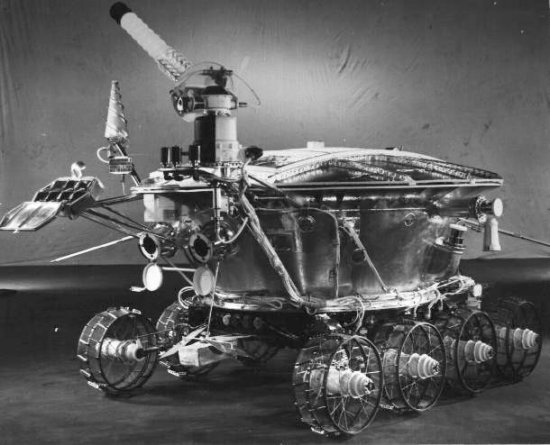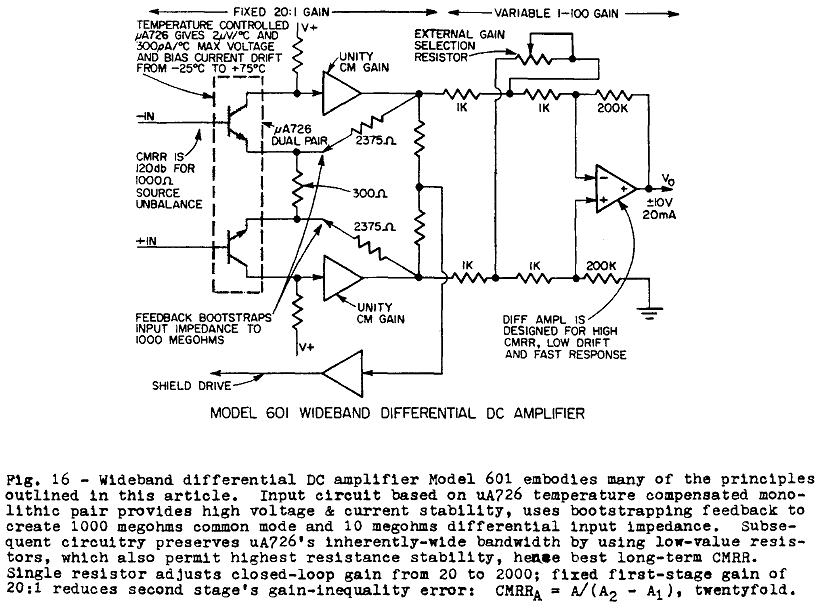While I may win on number of eyeballs (ROHM got calls because of my article), I wasn't making a scientific presentation. I just wanted to sell some kits. I'm sure the editors called it new and improved... they wouldn't print any article that wasn't . :wink: I find it hard to ignore as publication. Such magazines are often cited in technical searches.
I had seen the general topology around. Like I said opamps wrapped around an input device was in M&F Low Noise Electronic Design, page 124 (c. '73). Converting that to an instrumentation amp topology does not seem like that much of a stretch, while admittedly they did not do so. Presumably for the lower noise of a single ended topology.
[Note: there are some subtle noise (especially noise current) cancellations related to shunting two inputs of an instrumentation amplifier together with a low impedance floating source while those same inputs enjoy a relatively high impedance wrt ground. I haven't seen this discussed in literature either. ]
I had used this topology and seen it used in mic preamps years earlier. the transamp was inside a potted module so not exactly common knowledge but the folks in the game probably knew what was inside (I did).
------
Publication, at least as far as the patent office is concerned also counts when you "sell" something, while showing at a tradeshow usually establishes publication for most things. AES journal should be peer reviewed, and I've seen a few snarky exchanges with referees, but they sure didn't ask me about this.
---------
I'm not sure I understand the significance of AC coupling the inner opamp loop? The phono preamps (both MM and MS version) I published were cap coupled, while I believe I may have used DC coupling in some console preamps I did around that same time frame (less parts). The main issue with DC coupling the inner loop is that you should AC couple the emitter gain resistor or select devices carefully to avoid eating up headroom due to input offset voltage.
The preamp variant already being used by Peavey when I got there in '85 was DC coupled there as I recall and used the 2 opamp, not three opamp version. I don't know how long they were using it before I got there (they were using the 2SD786 low noise npn) so not more than a few years if that.
Did Dove publish any of these approaches in his console series for Studio Sound? I don't recall the details but surely he covered mic preamps. When I wrote about consoles in 1980 I touted the transamp, since it was before I started buying the low noise 737s and rolling my own.
JR
I had seen the general topology around. Like I said opamps wrapped around an input device was in M&F Low Noise Electronic Design, page 124 (c. '73). Converting that to an instrumentation amp topology does not seem like that much of a stretch, while admittedly they did not do so. Presumably for the lower noise of a single ended topology.
[Note: there are some subtle noise (especially noise current) cancellations related to shunting two inputs of an instrumentation amplifier together with a low impedance floating source while those same inputs enjoy a relatively high impedance wrt ground. I haven't seen this discussed in literature either. ]
I had used this topology and seen it used in mic preamps years earlier. the transamp was inside a potted module so not exactly common knowledge but the folks in the game probably knew what was inside (I did).
------
Publication, at least as far as the patent office is concerned also counts when you "sell" something, while showing at a tradeshow usually establishes publication for most things. AES journal should be peer reviewed, and I've seen a few snarky exchanges with referees, but they sure didn't ask me about this.
---------
I'm not sure I understand the significance of AC coupling the inner opamp loop? The phono preamps (both MM and MS version) I published were cap coupled, while I believe I may have used DC coupling in some console preamps I did around that same time frame (less parts). The main issue with DC coupling the inner loop is that you should AC couple the emitter gain resistor or select devices carefully to avoid eating up headroom due to input offset voltage.
The preamp variant already being used by Peavey when I got there in '85 was DC coupled there as I recall and used the 2 opamp, not three opamp version. I don't know how long they were using it before I got there (they were using the 2SD786 low noise npn) so not more than a few years if that.
Did Dove publish any of these approaches in his console series for Studio Sound? I don't recall the details but surely he covered mic preamps. When I wrote about consoles in 1980 I touted the transamp, since it was before I started buying the low noise 737s and rolling my own.
JR










